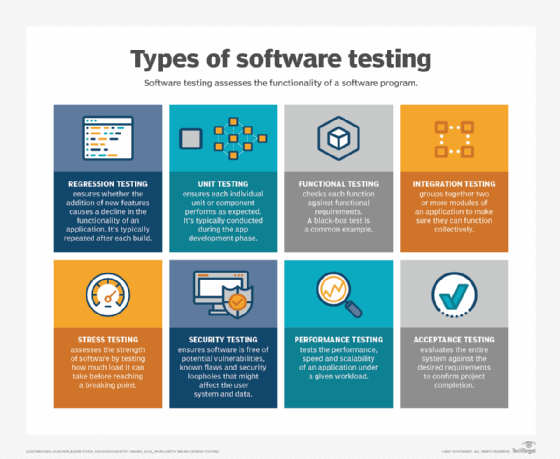shift-left testing
What is shift-left testing?
Shift-left testing is a software testing approach in which the code is tested in earlier stages of the software development lifecycle (SDLC). The term refers to moving testing to the left of the SDLC timeline. The three main goals of shift-left testing are to speed up testing, reduce the number of bugs in the code as early as possible, and improve the quality of the code and software application.
In traditional development environments, the development process is linear, with various steps conducted sequentially. This sequential approach means that code testing occurs after code development, in the later stages of the SDLC. With the shift-left approach, testing happens in earlier stages of the SDLC, often concurrently with development. Testing shifts to the left.
The shift-left approach illustrates the common development advice to "test early and often." Traditional testing models that wait until later in the development cycle can bottleneck development. These bottlenecks usually arise due to bugs and other issues in code that must be fixed before the code can go into production. The more bugs that are found, the longer it takes to finalize the code and application, causing delays and rework.
Shift-left testing is a better model for shift-left, or fast-lane, development. Since it promotes early, regular testing, it helps development teams remove many bugs early to move code into production and make the application market- or customer-ready.
Benefits of shift-left testing
Shift-left testing is all about involving testers earlier in the SDLC -- usually when development is in progress. This differs from traditional SDLC models where testers only come into the SDLC in later stages, when the code is already developed.
Shifting left means that testers find problems earlier in the development cycle. More importantly, it enables developers to fix the problems early. They get more time to correct the discovered issues and prevent compound errors. Detecting problems earlier facilitates debugging, which becomes more difficult, time-consuming and costly as software becomes more complete and incorporates more features.
Shifting left allows for faster discovery of defects and errors, so less effort is wasted working with and fixing a flawed implementation. It minimizes the need to redesign a flawed application, which might involve a lot of additional time, effort and money.
Shift-left testing also makes it easier for project managers (PMs) to allocate sufficient resources for testing. Testers are more involved in the planning stages of the SDLC, so PMs know in advance how many will be needed during the SDLC to find and fix errors as they arise.
Shift-left testing facilitates faster application development and time to market. Testing an application iteratively and continuously throughout the SDLC creates more transparency into the development status and product quality. Issues are fixed well before the deployment date, so the final product is higher quality and ready on time for customers.
Finally, shift-left testing lets teams use automation tools to test code early and often -- and every time a new feature or function is added. Automation minimizes the burden on the testing team and provides faster feedback to the development team. The testing team can write tests faster, and the development team can fix issues faster, leading to better-quality code and a better overall product.
Types of shift-left testing
Development and testing teams can choose from multiple approaches to shift-left testing. The following are four of the most common:
Traditional shift-left testing
The traditional shift-left testing method focuses on unit and integration testing through application programming interface testing and modern testing tools. It doesn't focus much on acceptance and system-level testing. User interface testing -- say, with record and playback tools -- is not part of the traditional approach.
Incremental shift-left testing
This method aims to break down complex development into smaller, more manageable pieces. It allows the testing of smaller segments that build on each other. Both development testing and operational testing shift to the left, which means that both code testing and testing for the product's operational readiness occur earlier in the SDLC.
Incremental testing is suitable for testing large or complex software applications. For such products, testing later can leave many bugs undiscovered or unaddressed, which can significantly affect production timelines and costs. Decomposing development into smaller increments can help prevent these adverse circumstances.
Agile/DevOps shift-left testing
With Agile/DevOps, testing occurs in numerous sprints, which are short time periods in which testers test the code in increments. The model is often restricted to developmental testing without operational testing, with the testing activities integrated into the SDLC. Automated testing tools can accelerate testing and resolve bugs as early as possible. Continuous communication and close collaboration among team members is a key aspect of Agile/DevOps shift-left testing.
Model-based shift-left testing
The model-based method uses executable requirements, architecture and design models. It aims to eliminate a large proportion of errors introduced in the early phases of the SDLC. This approach is the newest trend in shift-left testing, but it is already popular with many organizations and teams, especially among those that use executable models or simulation testing tools.

See how to make the shift-left testing approach work for your team and explore how experts run shift-left and shift-right testing.





